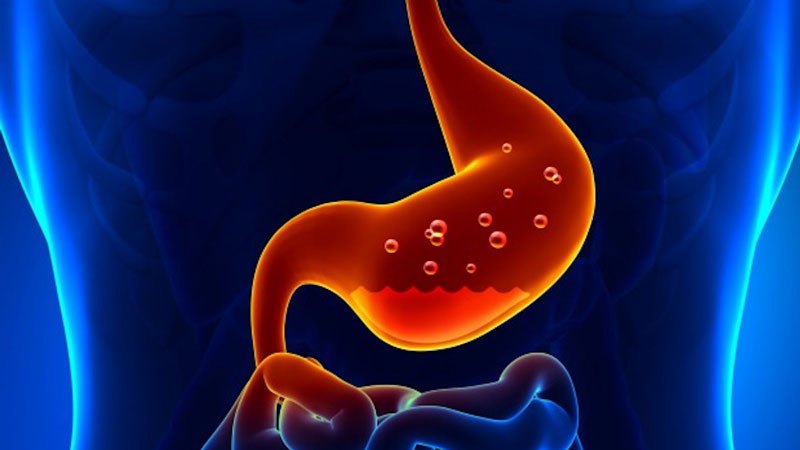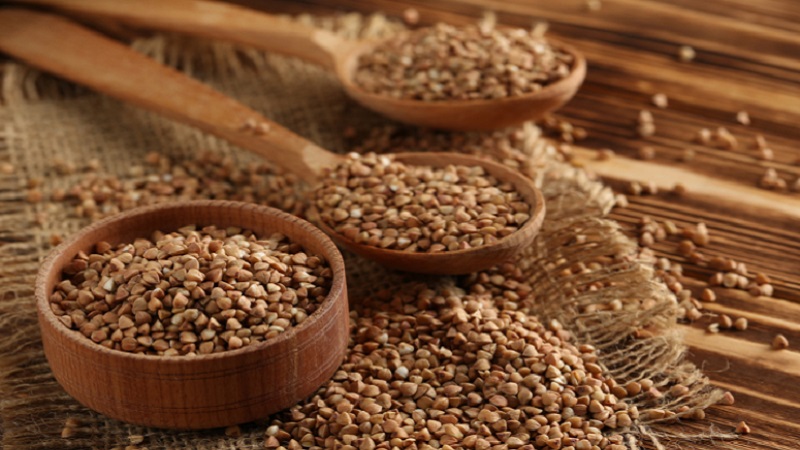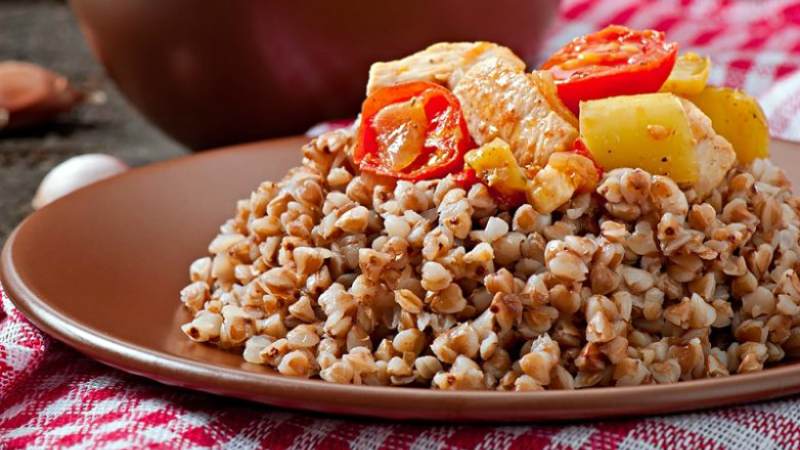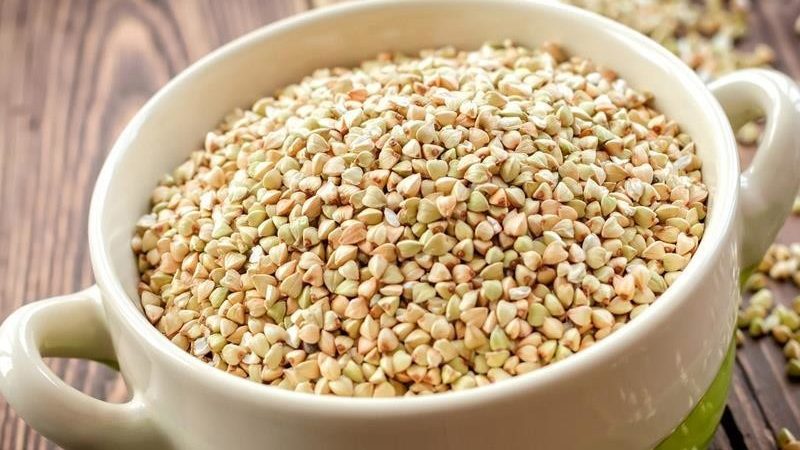Features of digestion of buckwheat: how much time is absorbed
Digestion of any product is a complex and lengthy process. The human digestive system processes food efficiently so that it brings maximum benefit.
Buckwheat, a cereal rich in vitamins, micro- and macroelements, is digested and absorbed differently in adults and children. In order for healthy grains to energize and make digestion comfortable, a number of simple rules are followed.
The content of the article
How does the digestion process take place?
Digestion is the intake, digestion and absorption of nutrients by the digestive system.... Nutrition is necessary for the body for energy, cell renewal and growth.
Cavity digestion takes place in the cavities of the mouth, stomach, small and large intestines, membrane - on cell membranes and in the intercellular space in the small intestine.
 Proteins, fats, carbohydrates, vitamins, and minerals that have entered the body with food are not absorbed by tissues and cells unchanged. They are broken down in the digestive tract cavity by special enzymes and from high-molecular-weight compounds are converted into low-molecular ones, soluble in water.
Proteins, fats, carbohydrates, vitamins, and minerals that have entered the body with food are not absorbed by tissues and cells unchanged. They are broken down in the digestive tract cavity by special enzymes and from high-molecular-weight compounds are converted into low-molecular ones, soluble in water.
Then the substances are absorbed in the digestive tract and enter the body fluids (blood and lymph), from where they are extracted by tissue cells.
The digestive system consists of:
- oral cavity;
- pharynx;
- the esophagus;
- stomach;
- small, large and rectum.
Digestion stages
Foods are digested at all stages of the digestive system. Each department has its own function.
In the oral cavity
Here food is crushed and processed with saliva, in which some substances dissolve, their taste is manifested. The enzyme amylase breaks down starch into sugars. Proteins and fats in the mouth are not broken down. Digestion time at this stage is 15–20 seconds.
The lump then moves into the stomach through the esophagus for 2-9 seconds. A special valve prevents food backflow.
In the stomach

Here food is mixed with sour juice and subjected to mechanical and chemical processing for 3-5 hours. Pepsin breaks down proteins. Food mixed with hydrochloric acid and enzymes, partially digested, becomes liquid or semi-liquid. Then, in small portions, it passes into the small intestine.
In the small intestine
The most important stage from a biochemical point of view, since in the process of digestion, more than 20 enzymes are used, which are secreted in the intestines. Most of the nutrients and vitamins are absorbed here.
In the duodenum, under the influence of pancreatic juice and bile, the breakdown of proteins, fats, starches and acids begins. They are finally digested in the jejunum and ileum using enzymes that produce mucosal cells. The duration of the process here is 5-6 hours.
The walls of the small intestine are covered with villi, through which the breakdown products of proteins and carbohydrates enter the bloodstream, and fats into the lymph.
Reference. The total absorptive surface of the small intestine is about 500 m2, and its length in an adult is 6.5 m.
In the large intestine
Undigested food leftovers enter the large intestine, where they stay for 10 to 15 hours. Here glucose, vitamins and amino acids are absorbed.Feces are formed from food debris, mucus, dead cells of the mucous membrane and intestinal microbes.
The department consists of 3 parts: blind, transverse colon and rectum. Its length in an adult is on average 1.5 m. The duration of the entire process of digestion in a healthy person is 24–36 hours.
What affects the duration of absorption of foods
Each product has its own assimilation time. For good digestion, follow these rules:
- Do not eat foods that require different digestion times at the same time. For example, cereals are digested on average in 3 hours. If you add a sausage sandwich to it, it will increase the duration of digestion by 1.5-2 hours.
- Mix food of the same digestion time, for example, vegetable and apple-pear salads, carrot-beet juice.
- After eating, they do not drink tea, water and other liquids for 1-2 hours - they dilute gastric juice, complicate digestion and increase the load on the digestive tract.
- Food is thoroughly chewed - this will speed up the digestion process.
- Protein (meat) food is eaten only warm. In the stomach, it will be digested in time in 2-3 hours. Cold foods are absorbed faster, proteins are not broken down, but go straight to the small intestine. There, bacteria found in protein foods begin to multiply and cause gas, bloating and constipation.
Adding vegetable oils to food lengthens the digestion process. Due to the enveloping of fat, such foods in the stomach are not processed by juices and enzymes.
How long does buckwheat digest in the stomach

Due to the high protein content (12.7 g per 100 g of raw product), the digestion time of buckwheat is 120 minutes, that is, exactly as much as buckwheat is in the stomach. The product is fully assimilated only after 4-5 hours. During this time, all proteins, fats, carbohydrates, vitamins are processed by the gastrointestinal tract and enter the blood and lymph through the small intestine.
Features of assimilation
Boiled buckwheat porridge in water is a product with a long digestion period (up to 2 hours). How much buckwheat will be absorbed if you add fat milk or butter to it? It will take at least 6 hours for complete absorption, because fats will not allow food to be quickly broken down in the stomach. The result is a feeling of heaviness and heartburn... In order not to experience discomfort, the product is best eaten with boiled chicken breast or boiled egg without butter and milk.
Groats contain 62.2 g of complex carbohydrates per 100 g of weight. This is a product with a low glycemic index - after consuming it, there will be no sharp rise in blood sugar. Carbohydrates will be released into the blood gradually, resulting in a constant energy balance. Macronutrients are slowly absorbed in the intestines, so a person does not experience hunger for 3-4 hours, but there is enough energy.
Fiber from buckwheat porridge enters the intestines partially digested. Passing along it like a broom, it cleans it of toxins.
In adults

Buckwheat is recommended for adults because of its high content of proteins, vitamins (PP, E and B group), phosphorus, potassium, silicon, copper, boron, manganese, amino acids, fiber and healthy carbohydrates.
Calorie content cereals - 313 kcal per 100 g. This is 13.2% of the daily value of an adult (2500 kcal).
Porridge rich in iron (up to 50% of the daily value), but with the simultaneous use of calcium, both elements are practically not absorbed. In order for buckwheat to benefit the body, people over 45, especially women, are advised to consume it separately from milk, cottage cheese and cheese due to the high risk of osteoporosis. The optimal interval between products is 3-4 hours.
Buckwheat in combination with kefir, butter and whole grain bread is a difficult food to digest. People with gastritis, stomach ulcers, pancreatitis, colitis have diarrhea or constipation.
Croup is also excluded by those who have been diagnosed with its individual intolerance. But buckwheat flour is used for diet mealsas it does not contain gluten, a plant protein that causes digestive problems in many people.
In children
The cereal, unique in its chemical composition, adds strength to the child, makes him healthy, strong and intelligent.
Buckwheat porridge is introduced into complementary foods for children due to its low allergenicity from 4-5 months. It goes well with vegetables, steamed cutlets. The product is added to the diet of the crumbs, starting from 1 tsp. per day, then the portions are increased. At the same time, the condition of the baby is monitored: if diarrhea and constipation occur, they stop giving buckwheat.
Problems with digestion are caused by buckwheat milk porridge. To assimilate complex carbohydrates and milk, a child's body requires different enzymes. Groats removes fats that the body receives with milk.
If the child has neurological problems (poor sleep, hypo- or hypertonicity of muscles), porridge is given with caution due to the presence of complex carbohydrates. By splitting, they increase the tone of the body.
Dietary fiber in buckwheat improves intestinal motility, which facilitates the work of the child's digestive system.
Attention! Buckwheat leads to quick satiety, so the portions should be appropriate for the child's needs and age.
Useful properties of buckwheat for the digestive tract

Croup has a positive effect on the organs of vision, the cardiovascular and nervous systems, but it is especially appreciated for its beneficial effect on the gastrointestinal tract.
Buckwheat normalizes digestion due to the fiber in its composition. In order for the porridge to cleanse the intestines, it is not boiled, but soaked in boiling water in the evening in a 1: 2 ratio. After 8-10 hours, the product is ready for use.
Magnesium, calcium, phosphorus, iron, iodine, copper contained in cereals are well absorbed in the digestive tract, improve metabolism.
Selenium prevents the development of cancer cells in the stomach and intestines.
Buckwheat cleanses the liver from toxins. The purified organ produces enzymes for the digestion of foods in the right amount, the digestion process is normalized.
Reference. Thanks to the improved liver function, the skin is cleared of acne, smoothes and becomes more elastic.
The product does not irritate the gastric mucosa, therefore it is eaten for gastritis 1-2 times a week.
With pancreatitis, cereals are included in the diet on the 5th day after an exacerbation. And the first 2-3 days they eat well-boiled porridge.
With bloating, diarrhea, constipation pass on green buckwheat, brewed with boiling water or sprouted. Untreated kernels stabilize the digestive process.
For pregnant women, cereal helps with heartburn. To prevent discomfort in the morning on an empty stomach or at the onset of heartburn, chew 3-4 raw grains.
Conclusion
Buckwheat will benefit the body and will be assimilated with high quality if you follow the basic rules of its use. The peculiarities of the effect of cereals on adult and children's organisms are also taken into account. The product normalizes the well-coordinated work of the digestive tract, does not cause discomfort.